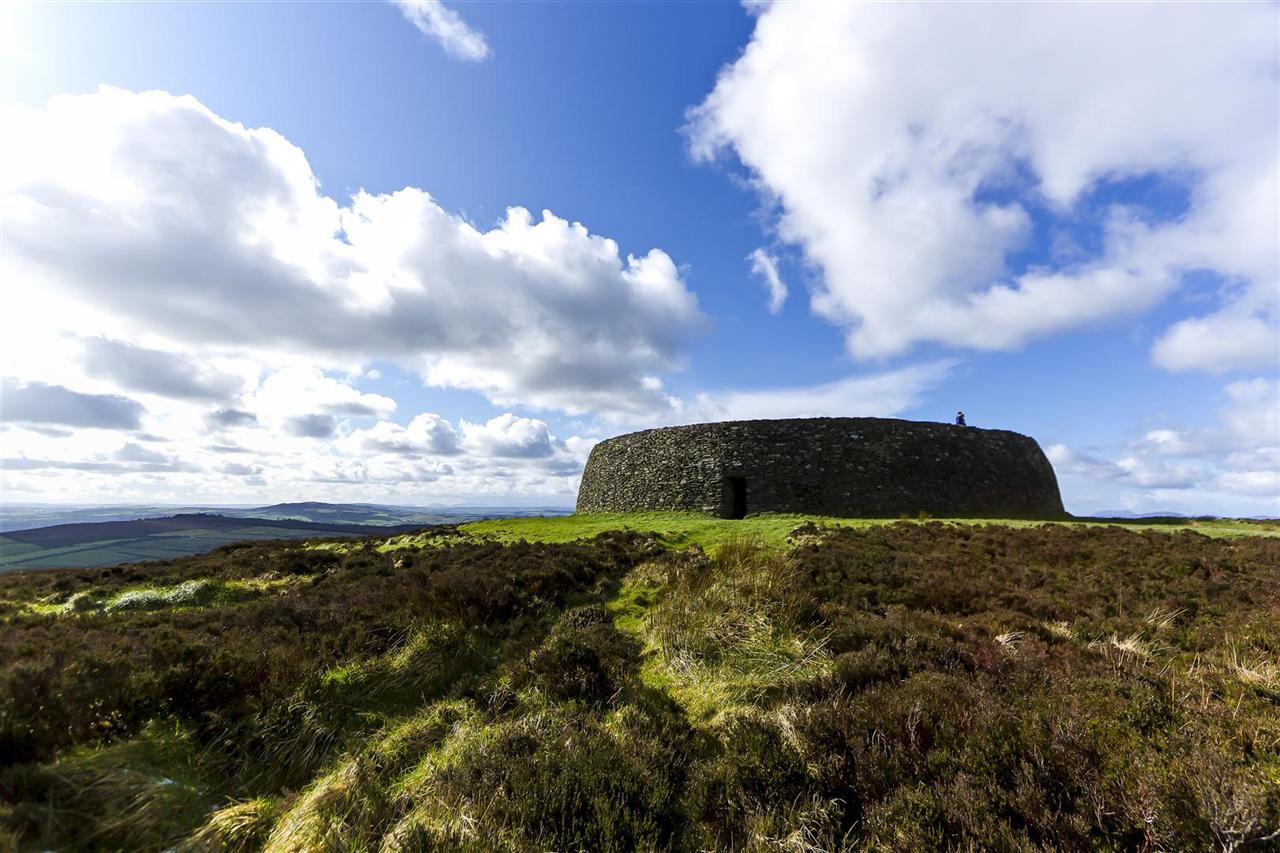Rumoured site of the baptism of St Patrick, the fort consists of a circular stone wall made of dry-stacked stone. It has a diameter of about 23 meters (75 feet) and is about 5 meters (16 feet) thick at its base.The hill we know as an Grianán Ailigh has dominated the landscape of the Northwest for upwards of 4000 years and has views of Lough Foyle as well as extensive panorama covering five counties.
The Neolithic burial chamber uncovered during the restoration work in 1870’s dates from 200BC. When the sons of Niall of the Nine Hostages moved North in 395AD to conquer new lands Prince Eoghan (Owen) is said to have made the existing site of Grianán his power base, giving his name to Inishowen (Island of Eoghan) and Tyrone (land of Eoghan).
The way of life of this warrior – based society was changed forever by the arrival of Christianity brought by St Patrick, when he was baptised at the well of Grianán.
The Legend:
- The fort is mentioned in Irish mythology and folklore. It’s associated with the Tuatha de Dannan, a mythical pre-Christian supernatural race in Irish mythology. According to legend, it was the home of the Dagda, the God-King of the Tuatha de Dannan, constructed the fortress to safeguard his son Aedh’s resting place.
- In this story from the fifteenth century Book of Lecan, the Grianán was built over the grave of the Dagda’s son Aedh, who had been murdered.
- Nuada of the Silver Hand also has a regal burial site within its grounds.
- Lastly, it is believed that beneath the cashel rest the slumbering warriors of the Ui Neill, poised to awaken and charge into battle upon the summons.
For another legend, check out The White Horsemen of Aileach
 Today
Today  Sunday
Sunday 


